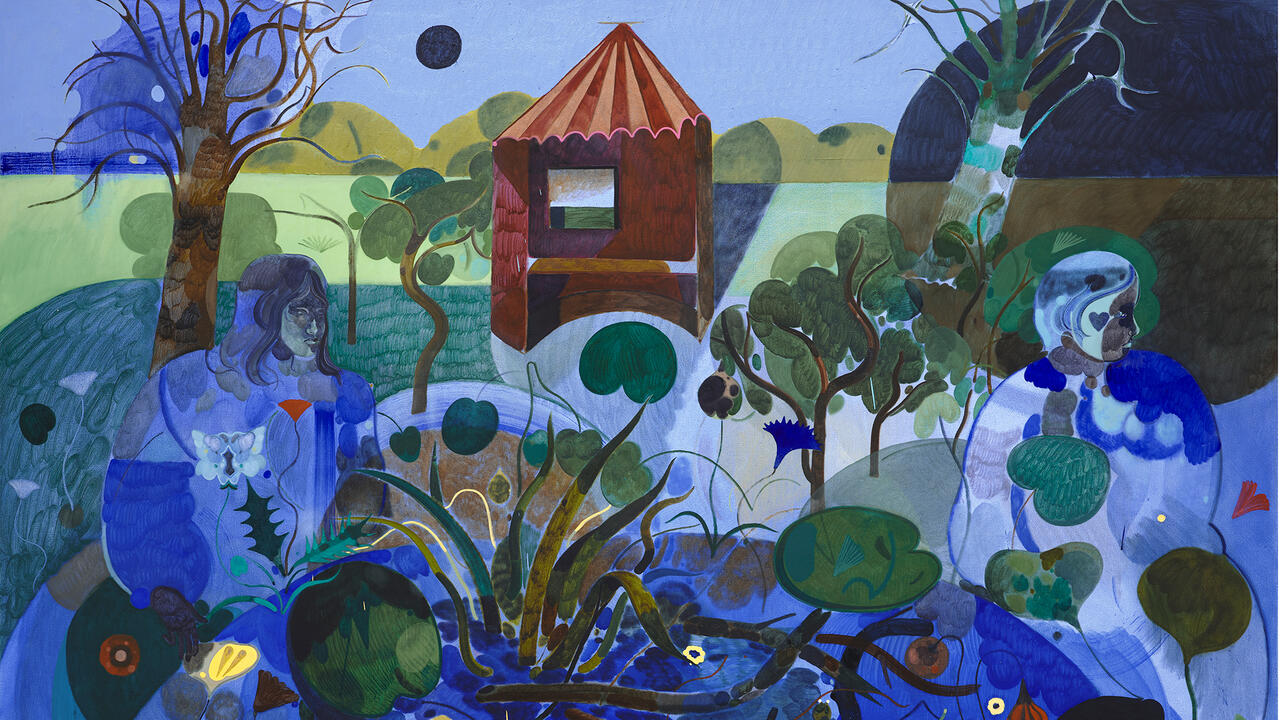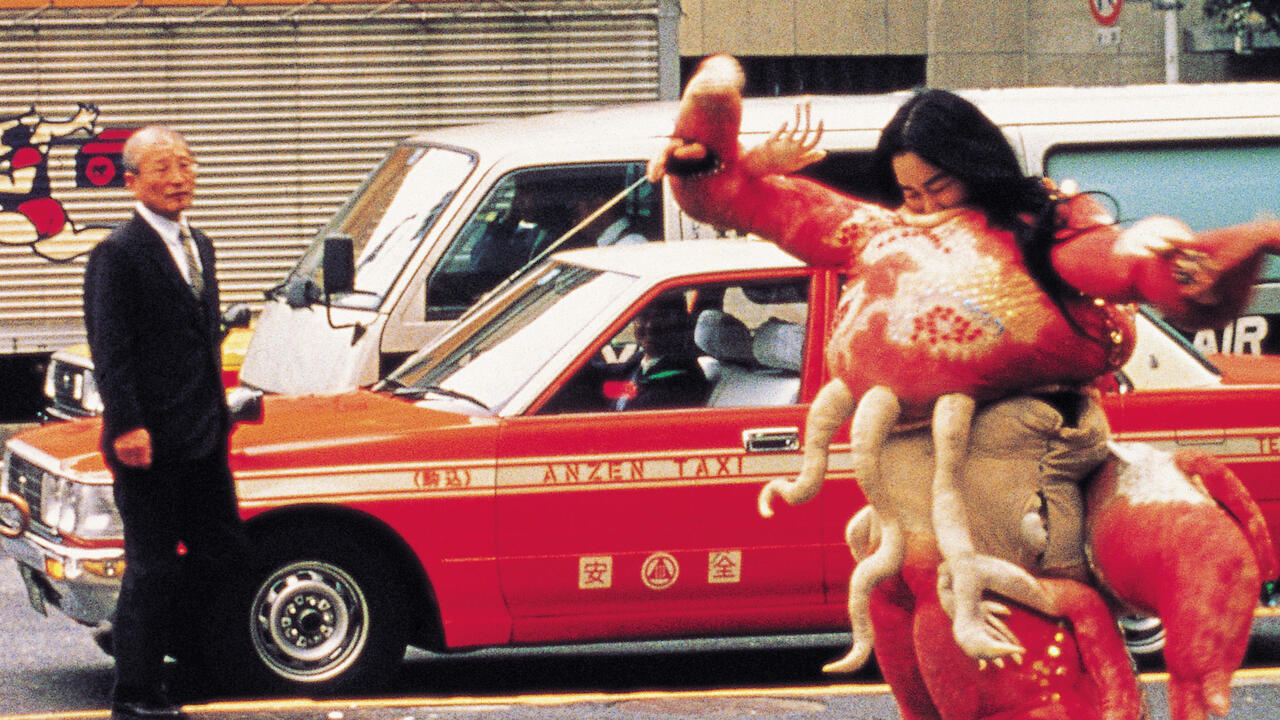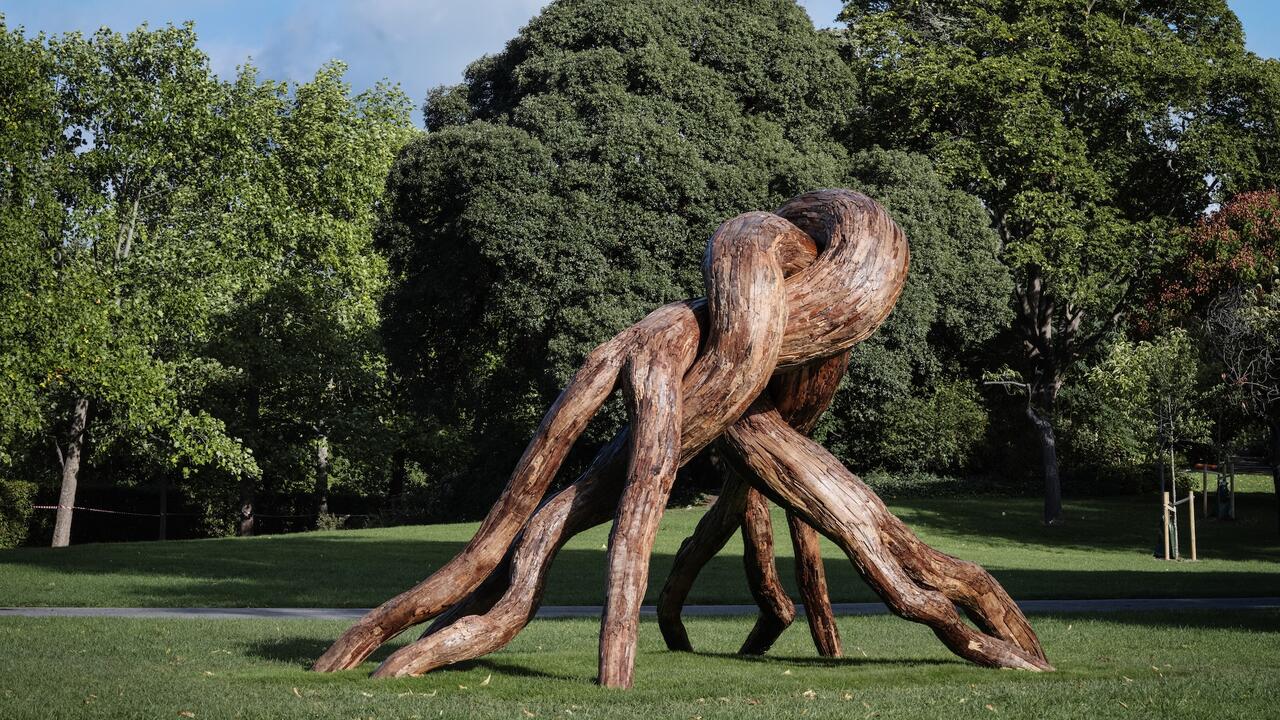Paul Chaney
Tranzit, Prague, Czech Republic
Tranzit, Prague, Czech Republic

No matter how often the term ‘artistic research’ has been used in recent years, its meaning remains elusive. In Europe, this ambiguity has spawned academic meta-debates asking: ‘What even is “artistic research”?’ Yet, it’s rare to find projects that successfully combine art-making with the methods of real scientific research.
In Donetsk Syndrome Diagrammatic (2017), however, the British geophilosopher Paul Chaney manages to do so while also embracing his fondness for the absurd. The exhibition centres on Chaney’s research into the recent conflict in eastern Ukraine, which broke out in the region of Donetsk (where the artist lived for a year) in 2014. However, Chaney’s research dates further back: specifically, fourteen billion years earlier, with the Big Bang.
The show is dominated by a large timeline, which starts at the gallery entrance. This consists of large-format sheets of paper with handwritten annotations in coloured pencil, divided into colour-coded sections, with numerous drawings, photographs, scribbled notes and arrows, coursing through the exhibition space like a river. Beginning with the Big Bang and the elements helium and hydrogen, the timeline progresses by a hundred million years per metre – from the creation of the Earth to the formation of its atmosphere and from the release of oxygen from cyanobacteria to the rapid growth of vegetation during the Devonian period, culminating in the emergence of humanity. At the previous rate, human history would take up a mere 0.1 millimetres on Chaney’s diagram, so at this point he shifts the scale to 2,500 years per metre to better tally the extent of modern cultural, technical progress with the developments of natural evolution. The timeline culminates with a segment on the conflict in Ukraine.
No later than 1800, around the start of the period known as the anthropocene (in which human interaction with natural processes became indelible), the connections between nature, economics, society and politics began to multiply. In 1870, as displayed on Chaney’s timeline, by decree of the Czar, the Briton John Hughes founded Donetsk as an industrial metropolis in order to strengthen Russia’s military role in the competition of world powers. ‘Since the 1870s,’ writes Chaney, ‘deterritorialized workers had been brought [to Donetsk] from all over Russia […] The city has been at war five times since 1917.’ The result was an ‘identity crisis’ that paved the way for Russia’s infiltration and destabilization of the region today. Donetsk Syndrome Diagrammatic was supposed to go on display at the Donetsk Cultural Centre Izolyatsia in 2015, but, according to Chaney, all that currently remains of the centre are facilities used for military training, strorage and torture by the self-proclaimed, separatist state, the People’s Republic of Donetsk.
The vast contingency of human history is rarely rendered as vividly as in Chaney’s installation. In his timeline, billions of years go by, elements emerge and combine, tectonic plates shift – despite the eventualities it skilfully represents, history nonetheless seems to lead with teleological determinacy to the war in Donetsk. Chaney combines the cold analytics of science with a refined sense of tragic irony: yet Donetsk Syndrome Diagrammatic also harkens back to experiments of conceptual artists such as Teresa Burga and Robert Smithson. In the 1980s, Burga, working with a psychologist, undertook psychological and sociological research into the self-perceptions of Peruvian women in Profile of the Peruvian Woman (1980–81), producing a work that also questioned the reliability of such studies. Like Burga, Chaney combines art and research the way one wishes it
were more often done: with genuine intellectual curiosity and derived from the pressing issues of our day, but doing more than simply mimicking scientific method.
Translated by Philipp Rühr and Stanton Taylor
Main image: Paul Chaney, Donetsk Syndrome Diagrammatic, 2017, installation view. Courtesy: the artist and Tranzit, Prague
























